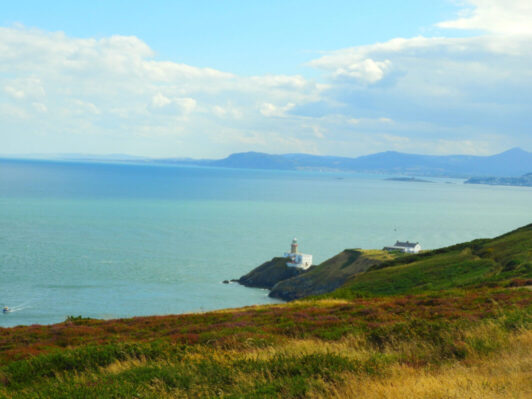 Blue carbon projects focus on the conservation, restoration, and sustainable management of coastal and marine ecosystems, such as mangroves, seagrasses, and salt marshes, to sequester and store atmospheric carbon dioxide (CO₂). These ecosystems also provide co-benefits like biodiversity conservation, shoreline protection, and improved livelihoods for coastal communities. Below is a brief guide for developing blue carbon projects.
Blue carbon projects focus on the conservation, restoration, and sustainable management of coastal and marine ecosystems, such as mangroves, seagrasses, and salt marshes, to sequester and store atmospheric carbon dioxide (CO₂). These ecosystems also provide co-benefits like biodiversity conservation, shoreline protection, and improved livelihoods for coastal communities. Below is a brief guide for developing blue carbon projects.
Envirowise can help you in carbon project development from initial design to final carbon credit issuance.
- Project Identification and Feasibility Study
- Identify Target Ecosystems: Select coastal ecosystems like mangroves, seagrasses, or salt marshes.
- Baseline Carbon Stock: Assess the current carbon sequestration levels and storage in the selected area.
- Feasibility Assessment:
- Technical Feasibility: Analyze the potential for restoration or conservation and the techniques required.
- Economic Feasibility: Evaluate project costs and potential revenue from carbon credits.
- Social Feasibility: Ensure community acceptance and involvement.
- Threat Assessment: Identify threats to the ecosystem (e.g., deforestation, pollution, overfishing).
- Stakeholder Engagement
- Identify Stakeholders: Include local communities, governments, NGOs, and private sector entities.
- Consultation and Buy-In: Conduct consultations to inform stakeholders and gain their support.
- Participatory Planning: Involve stakeholders in project design to ensure their needs and concerns are addressed.
- Benefit Sharing Mechanism: Develop a transparent mechanism for sharing the project’s benefits.
- Carbon Standard and Methodology Selection
Select an appropriate carbon standard, such as:
- Verified Carbon Standard (VCS): Offers methodologies for wetlands and coastal ecosystem projects.
- Gold Standard: Suitable for projects with strong social and environmental co-benefits.
- Plan Vivo: Focused on community-based ecosystem projects.
Choose a methodology, such as:
- VM0033: Methodology for tidal wetland and seagrass restoration.
- VM0021: Soil carbon quantification methodology for wetlands.
- Baseline and Additionality Assessment
- Baseline Emissions: Estimate emissions under the “business-as-usual” scenario, including carbon losses from deforestation or degradation.
- Additionality: Demonstrate that the project goes beyond existing legal and financial requirements and would not occur without carbon finance.
- Project Design Document (PDD)
Develop a detailed PDD outlining:
- Project Scope and Objectives: Goals for carbon sequestration and co-benefits.
- Baseline and Project Scenario: Emission reductions and storage improvements due to project activities.
- Monitoring Plan: Methods for tracking carbon stock changes and ecosystem health.
- Environmental and Social Impacts: Analysis of risks and mitigation strategies.
- Validation and Registration
- Validation: Submit the PDD to an accredited third-party auditor for review.
- Registration: After validation, register the project with the chosen carbon standard.
- Implementation
- Conservation Activities: Protect existing blue carbon ecosystems from deforestation, pollution, or encroachment.
- Restoration Activities: Replant degraded mangroves, restore seagrass beds, or rehabilitate salt marshes.
- Community Programs: Provide training and alternative livelihoods to reduce pressure on the ecosystem.
- Monitoring, Reporting, and Verification (MRV)
- Monitoring: Collect data on carbon sequestration, ecosystem health, and social outcomes.
- Reporting: Prepare periodic monitoring reports as per the chosen standard’s requirements.
- Verification: Engage a third-party auditor to verify emission reductions and co-benefits.
- Issuance of Carbon Credits
- Verified carbon credits are issued by the chosen standard.
- Sell credits in voluntary or compliance carbon markets.
- Co-Benefits of Blue Carbon Projects
- Biodiversity Conservation: Protect habitats for marine and coastal species.
- Coastal Protection: Reduce erosion and protect against storm surges.
- Livelihood Support: Provide sustainable income sources for local communities.
- Water Quality: Improve water filtration and reduce pollution.
Challenges in Blue Carbon Projects
- Data and Baseline Complexity: Accurately measuring carbon stocks and fluxes can be technically challenging.
- Community Engagement: Securing local buy-in requires careful planning and equitable benefit sharing.
- Regulatory and Legal Issues: Clarify ownership and usage rights of coastal areas.
- Climate Change Impacts: Rising sea levels and other climate changes may impact the project area.
Conclusion
Blue carbon projects offer a unique opportunity to combat climate change while promoting sustainable development and conserving critical ecosystems. By following best practices in project design, stakeholder engagement, and compliance with carbon standards, these projects can deliver measurable environmental and social benefits.
Envirowise can help you in carbon project development from initial design to final carbon credit issuance.
